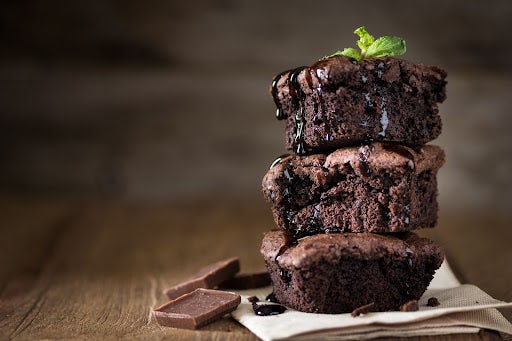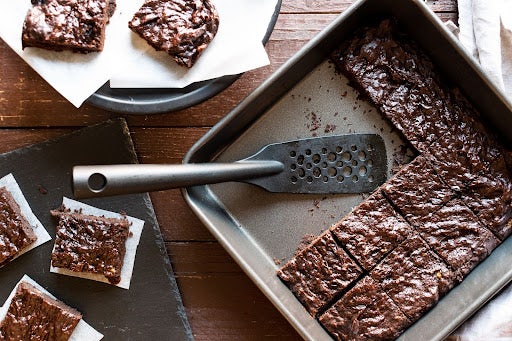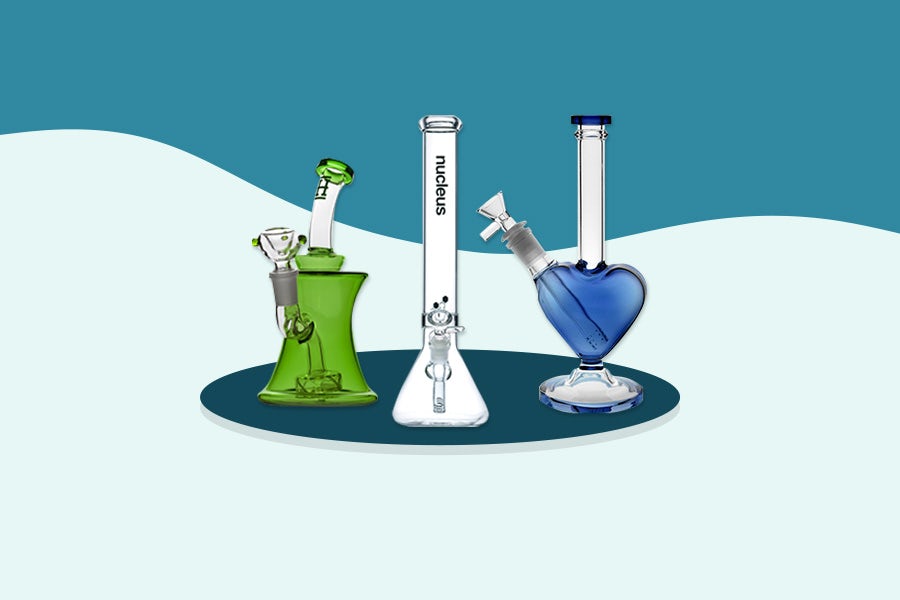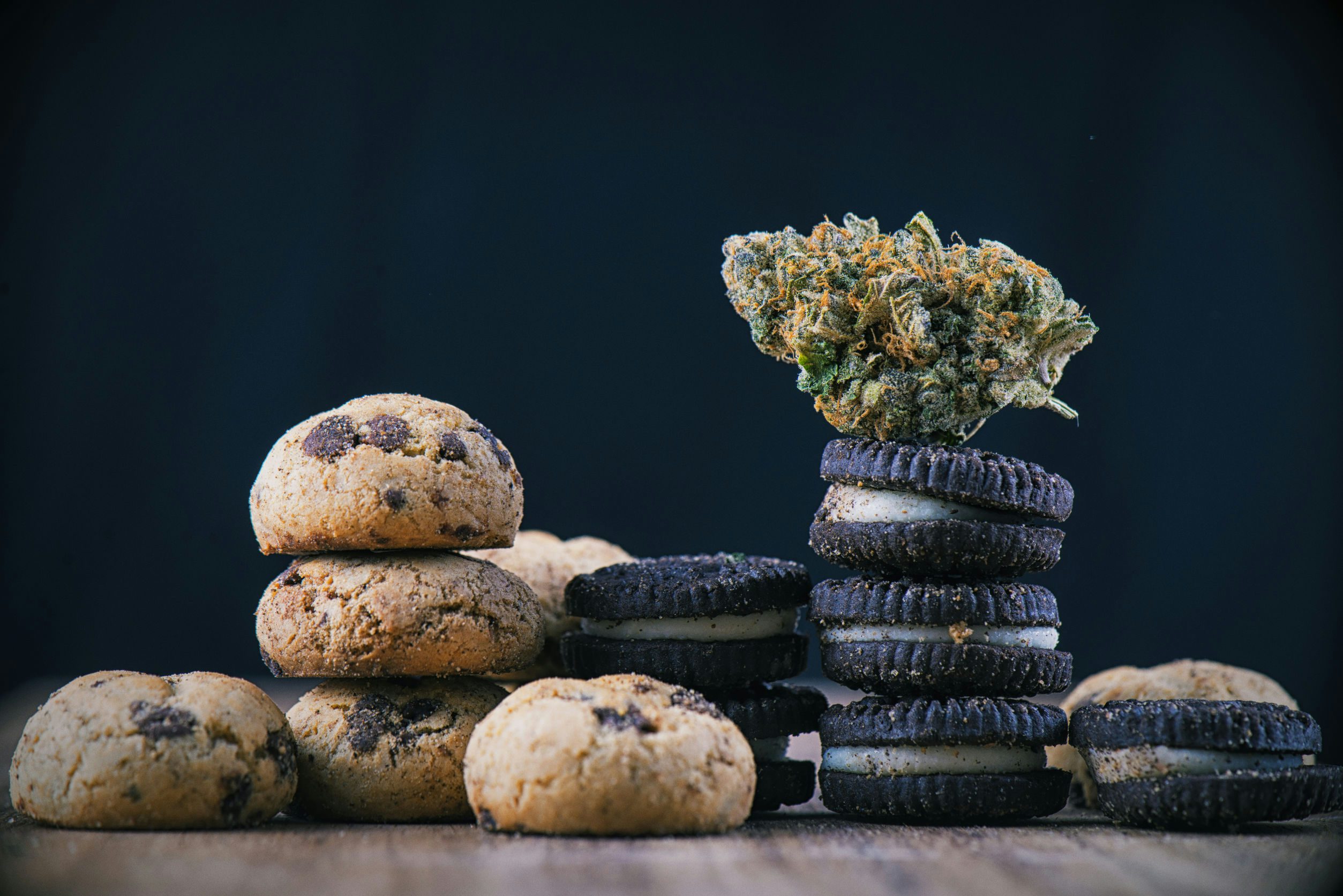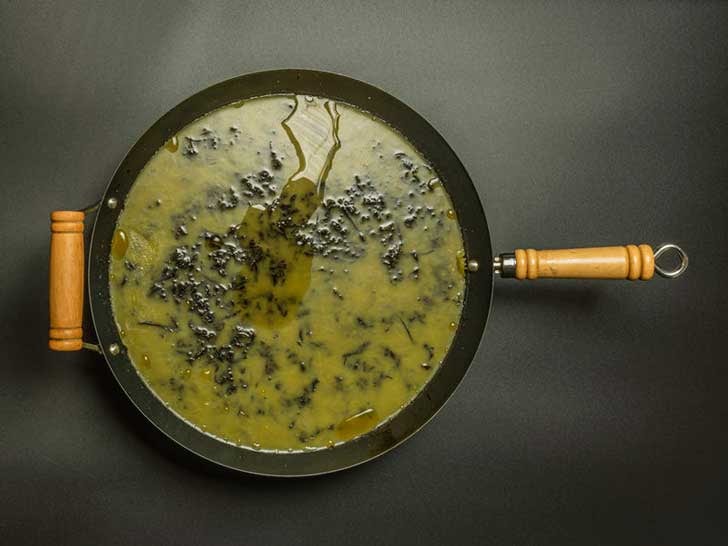Cannabis edibles have progressed beyond basic “pot brownies” and now come in all sorts of flavors and tastes and most work perfectly. But some things with marijuana can be like oil and water – literally. If you’re making edibles, then chances are you’ve seen lecithin in a recipe or two. It can be the key to making seamlessly-blended weed gummies, and improve the effectiveness of all types of edibles.
What is lecithin and what does it do?
Lecithin is a generic term given to a whole host of fatty substances called phospholipids that are found in human, animal, and plant tissues, and is used as an emulsifier and a surfactant in a variety of manufactured foods. Chemically, the structure of lecithin is composed of head and tails. The head portion of the lecithin is hydrophilic and water soluble, and the tail of the lecithin molecule is hydrophobic and fat soluble. Thus, they help form soluble of fat with water. Lecithin is found naturally in many foods like soybeans and egg yolks – and the word derives from the Greek word lekithos, meaning egg yolk. The body uses lecithin to aid in the metabolic process, to make the neurotransmitter acetylcholine, and to move fats.
More specifically for food manufacturers – and people who want to make cannabis edibles that are not fat based, like THC gummies – lecithin is a complex mixture of lipids that works as an emulsifier, helping blend together substances that typically do not mix well, like oil and water.
Lecithin is a common ingredient in salad dressing, preventing it from separating into a liquid layer cake of oil and water. Emulsifiers like lecithin are also commonly added to peanut butter to help it retain a single, creamy consistency.
What does this mean for cannabis?
How to use lecithin for edibles
You may have encountered lecithin on an edibles recipe, in particular if you’re hunting around for a new way to make cannabis gummies. This is because as an emulsifier, it can work to combine oil and water together, so that the cannabis oil doesn’t separate from the rest of the ingredients in a batch of THC gummy bears.
Because it works to prevent the separation of water and fats, lecithin can also extend the shelf life of edibles. 1
Beyond the emulsifying properties of lecithin, it may also help improve the metabolism of edibles, so they potentially kick in quicker. The emulsifying properties of lecithin may help the cannabinoids breakdown into tiny globs of fat and bile acids known as micelles. allow the cannabinoid molecules to be separated from each other and encapsulated with water molecules. This makes them more susceptible to absorb directly into the lymphatic system before the first pass metabolism in the liver. A lot of cannabis users therefore attest that it can increase the potency by boosting the bioavailability of cannabinoids, and there is some scientific evidence that suggest lecithin can help with the absorption of other molecules. However, lecithin’s ability to enhance the effects of THC remain mostly anecdotal. 2 3
An article published in the American Journal of Translational Research in 2016 asserted that “co-administration of dietary lipids or pharmaceutical lipid excipients may substantially increase the systemic exposure to orally administered cannabis,” and that “the amount of lipids present in cannabis-containing foods, or following a high-fat meal, is sufficient to activate intestinal lymphatic transport and lead to increased systemic exposure to cannabinoids.” 4
Does this mean that adding lecithin will guarantee a more potent batch of edibles? No, but it could potentially be another reason to use it in your edibles-making.
Can you add lecithin to cannaoil?
Adding lecithin to cannaoil during the infusion process can help it blend more seamlessly into whichever recipe you’ll use it in. In a pan of weed brownies, it can help the other ingredients like cocoa and sugar bind with the cannabis oil and potentially distribute more evenly throughout the mix. This can help with dosing, in that it can help assure that each serving of the edibles has the same amount of cannabis oil.
You can also add lecithin to cannabutter – but not while the butter, cannabis, and water are simmering together. The water is meant to be thrown out after the infusion process, and adding lecithin will instead combine the water and butter, which you don’t want.
How much lecithin should you use in your oil? Typically, a ratio of one teaspoon to one tablespoon of sunflower lecithin to one cup of coconut oil is considered enough. If you’re using a crockpot, slow cooker, or saucepan, simply add it in with the oil and decarboxylated cannabis when “cooking” the oil preparation.
Advantages of lecithin in cannabutter
If your recipe uses cannabutter to make a water-based edible like gummies, then lecithin will help the melted butter and water blend together.
On the other hand, lecithin may not be needed in most cannabis butter, as it is very often used to make baked goods like pot brownies. Baked goodies often already have eggs in them, which are a natural source of lecithin.
Basically, you can add lecithin to your cannabis butter for use in any recipe in which you’d like to emulsify the fat with water, or ensure that your cannabis infusion is evenly distributed throughout the recipe.
A very important thing to keep in mind with cannabis butter though, is to make sure not to add the lecithin during the infusion phase. Cannabis butter is made by adding butter and water together with decarboxylated cannabis in a tool such as a crockpot, slow cooker, or saucepan. After the butter has been infused with cannabis, it cools and separates from the water, which is discarded. If you add lecithin before this phase, the water and butter can emulsify together, leaving you with a batch of cannabis infused butter-water that you probably want to avoid.
The pros and cons of using soy lecithin
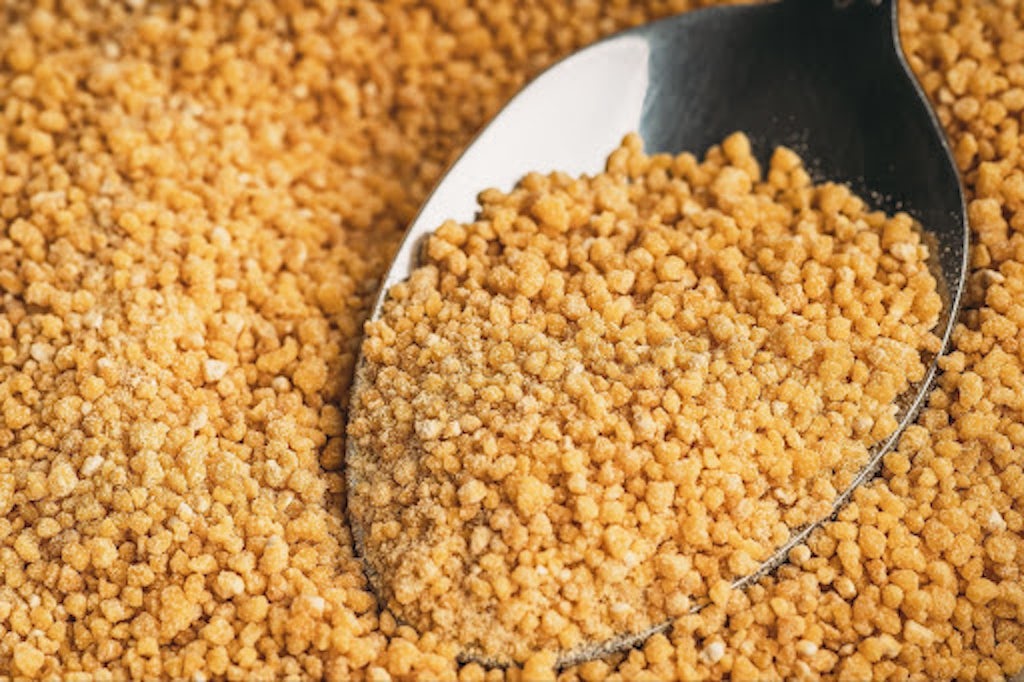
The main benefits of lecithin are its use as an emulsifier and its potential ability to increase metabolism and the bioavailability of cannabis.
In addition, research has also found that soy lecithin could potentially be used to help reduce cholesterol, and that for middle-aged women, it may be able to reduce the fatigue caused by menopause. 5 6 7
Lecithin is considered “generally safe” by the US Food and Drug Administration but there are some commonly reported side effects, including other reported side effects of lectin such as diarrhea, nausea, and abdominal pain and bleeding. There is also speculation that emulsifiers like lecithin may have adverse effects on the intestines and the microorganisms that live inside of us. 8 9
The different types of lecithin
At the health store or your local supermarket, you’ll probably find three types of lecithin: soy, sunflower, and corn. Typically found in the vitamin or supplement aisle, lecithin is sold in powder, liquid, and granulated form.
Soy lecithin
Not surprisingly, soy lecithin is made from soybeans. It is one of the most commonly used substances in processed foods and can be found in everything from infant formula to margarine, dairy products, cereal, and salad dressings. According to the American Academy of Allergy, Asthma, and Immunology, people who are allergic to soy face a “very small” risk from soy lecithin as it “is derived from highly processed soy oil and has very little, if any, soy protein.”
Sunflower lecithin
Made from dehydrated sunflowers, sunflower lecithin is much less commonly found in processed foods. It can be a good alternative for people who are turned off by the fact that the overwhelming majority of soybeans in the US are genetically modified.
Corn lecithin
Corn lecithin is extracted from corn germ and like soy and sunflower lecithin, it can be used in a wide variety of food products from baked goods to chocolates, ice cream, and a whole lot more. 10
Bottom line
To summarize, lecithin is a well known, safe compound that can be added to increase stability in sauces, creams, dips and even cannabis edibles. It may help increase the digestibility and reduce the waiting time for edibles to kick in, and is natural. Even regular use would cause no harm and has an extremely low risk of an allergy even to susceptible people.
Sources
- Zhu, Q., Pan, Y., Jia, X., Li, J., Zhang, M. and Yin, L. (2019), Review on the Stability Mechanism and Application of Water-in-Oil Emulsions Encapsulating Various Additives. Comprehensive Reviews in Food Science and Food Safety, 18: 1660-1675. https://doi.org/10.1111/1541-4337.12482
- Peter X Chen, Michael A Rogers, Opportunities and challenges in developing orally administered cannabis edibles, Current Opinion in Food Science, Volume 28, 2019, Pages 7-13, doi:10.1016/j.cofs.2019.02.005.
- Peter X Chen, Michael A Rogers, Opportunities and challenges in developing orally administered cannabis edibles, Current Opinion in Food Science, Volume 28, 2019, Pages 7-13, doi:10.1016/j.cofs.2019.02.005.
- Zgair, A., Wong, J. C., Lee, J. B., Mistry, J., Sivak, O., Wasan, K. M., Hennig, I. M., Barrett, D. A., Constantinescu, C. S., Fischer, P. M., & Gershkovich, P. (2016). Dietary fats and pharmaceutical lipid excipients increase systemic exposure to orally administered cannabis and cannabis-based medicines. American journal of translational research, 8(8), 3448–3459.
- Wilson, T. A., Meservey, C. M., & Nicolosi, R. J. (1998). Soy lecithin reduces plasma lipoprotein cholesterol and early atherogenesis in hypercholesterolemic monkeys and hamsters: beyond linoleate. Atherosclerosis, 140(1), 147–153. https://doi.org/10.1016/s0021-9150(98)00132-4
- Mourad, A. M., de Carvalho Pincinato, E., Mazzola, P. G., Sabha, M., & Moriel, P. (2010). Influence of soy lecithin administration on hypercholesterolemia. Cholesterol, 2010, 824813. https://doi.org/10.1155/2010/824813
- Hirose, A., Terauchi, M., Osaka, Y., Akiyoshi, M., Kato, K., & Miyasaka, N. (2018). Effect of soy lecithin on fatigue and menopausal symptoms in middle-aged women: a randomized, double-blind, placebo-controlled study. Nutrition journal, 17(1), 4. https://doi.org/10.1186/s12937-018-0314-5
- Naimi, S., Viennois, E., Gewirtz, A.T. et al. Direct impact of commonly used dietary emulsifiers on human gut microbiota. Microbiome 9, 66 (2021). https://doi.org/10.1186/s40168-020-00996-6
- Lecithin. (2021). In Drugs and Lactation Database (LactMed). National Library of Medicine (US).
- Liu, H., Liu, T., Fan, H., Gou, M., Li, G., Ren, H., Wang, D. and Cheng, Z. (2018), Corn Lecithin for Injection from Deoiled Corn Germ: Extraction, Composition, and Emulsifying Properties. Eur. J. Lipid Sci. Technol., 120: 1700288. https://doi.org/10.1002/ejlt.201700288
Sign up for bi-weekly updates, packed full of cannabis education, recipes, and tips. Your inbox will love it.

 Shop
Shop Support
Support
